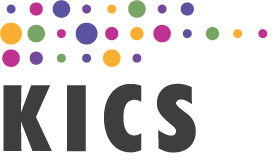Now 14 visitors
Today:751 Yesterday:874
Total: 14
323S 83P 30R
2025-11-30, Week 49 |
| Member Login |
| Welcome Message |
| Statistics |
| Committee |
| TACT Journal Homepage |
| Call for Paper |
| Paper Submission |
| Find My Paper |
| Author Homepage |
| Paper Procedure |
| FAQ |
| Registration / Invoice |
| Paper Archives |
| Outstanding Papers |
| Author Homepage |
| - Paper Procedure |
| - Journal Procedure |
| - Presentation Tips |
|
| Proceedings |
| Program with Papers |
| Plenary Session |
| Tutorial Session |
|
| Presentation Assistant |
| Hotel & Travel Info |
| About Korea |
| Accommodation |
| Transportation |
| VISA |
| Other Infomation |
|
| Photo Gallery |
| Scheduler Login |
| Seminar |
| Archives Login |
|
| Sponsors |

|

|

|

|

|

|

|

|

|

|

|

|
|
|
|
|
|
2019
 |
Title : Cyber Security of Pyeongchang Winter Olympic Games  File File |
|
Time : 15:00 Feb.18 (Mon) 2019 |
|
Speaker : Director General, Oh Sang-jin, Ministry of Science and ICT (MSIT), Korea
Oh Sang-jin works as Director General of Technology Bureau, PyeongChang Organizing Committee for the 2018 Olympics & Paralympic Winter Games(POCOG). Recently he joined POCOG to prepare ICT S/W, H/W and infrastructure for 2018 winter Olympic Games in Pyeong-Chang in Korea. He has usually worked as a public employee in Korean government for ICT promotion role since 1993.
He has built his career and experience in Ministry of Science, ICT and Future Planning, the President’s Office, Korea Communications Commission and Ministry of Information and Communications. He studied electrical engineering in Hanyang University in Seoul (89 ~ ’93), and received MBA from University of Oregon, USA (’03 ~’05).
Abstract : Olympic Games are one of the most grand sport events in the world. In case of Pyeongchang Winter Olympic Games, more than 1.3 million spectators visited Olympic sites and more than 3.5 billion people were estimated to watch the event through media. For the various services, more than 90 thousand people were involved for the Olympic operation. To operate the big event smoothly, the organizing committee mainly depended on the high end technologies, especially on information communications technology. The committee built up huge ICT infrastructure, including wired and wireless network facilities and data centers with a lot of SW packages and numerous connected devices.
Big ICT infrastructures are basically vulnerable to cyber-attacks. Especially, Olympic ICT infrastructure has usually been one of the main targets of boastful hackers all over the world. Therefore, the committee applied many kinds of cyber security measures to the infrastructure. The strong cyber security policy covered networks, SW, devices, data centers and human management. The policy and effort had undoubtable worth, defending the destructive cyber-attack done at the Olympic opening ceremony time. The experience of successful recovery from the damage of the attack could be valuable to share among global ICT society to prevent the future possible chaos.
|
 |
Title : Driving behavior analysis by using smartphone  File File |
|
Time : 16:00 Feb.18 (Mon) 2019 |
|
Speaker : Ha-Nam Nguyen has been a Vice president of Information Technology Institute (ITI), Vietnam national University in Hanoi (VNU)
Ha-Nam Nguyen has been a Vice president of Information Technology Institute (ITI), Vietnam national University in Hanoi (VNU) since 2017, an associate professor at Department of Information Systems in University of Engineering and Technology (VNU-UET) since 2011, a Senior Lecturer in Data Mining, Statistical Machine Learning, and Database at VNU-UET since 2007. He received his BSc in Information Technology from VNU-Hanoi University of Science and Technology (HUST) in 1998, MSc in Computer Science from Chungwoon University (CWU), Korea in 2003, and PhD in Software Applications from Korea Aerospace University (KAU), Korea in 2007. He interested in financial risk analysis, behavior analysis, developing information systems and maritime logistics/transport using techniques from data analysis, modelling, and software engineering. He has involve in several industrial projects collaborated with Hitachi, Panasonic and Samsung as well as international grants like Newton fund, Horizon 2020 – Research and Innovation Framework Programme.
Abstract : Nowadays, driving assistance and road safety are critical issues in all countries around the world. According to the global status report on road safety 2015 by World health organization (WHO), road accidents are worldwide top ten causes of death, killing more than 1.2 million of people per year. The road traffic fatality rates are especially high in the low-income and middle-income countries. In fact, there are numerous factors possibly causing road accidents. Nonetheless, assisting and providing safety awareness for drivers during their trips is an effective approach to preventing such accidents. Furthermore, the document also shows that approximately a quarter of all road traffic deaths involve in motorcyclists. However, very few existing works provide driving assistance and safety awareness for motorcyclists. Nonetheless, there are certain limitations in such works.
Recently, researchers have paid a lot of attention to study various methods of providing assistance and safety awareness to drivers. Indeed, such works primarily fall into the following categories: recognizing vehicle mode (car, bus, train, bike, walking...), identifying driving styles (normal, aggressive, drunken, fatigue, drowsy, inattentive...), detecting normal/abnormal driving events (moving, stopping, turning left, turning right, weaving, sudden braking, fast u-turn...), accident detection, estimating energy consumption and pollution, monitoring road and traffic condition.
In this talk, we would like to present our study on developing a driving behavior detection system in order to automatically warn by sound, text message or call in emergency cases. We proposed an android application that can detect an abnormal behaviors based on analyzing the sequence of primitive activities of driver(i.e. stopping, going straight, turning left, turning right). Our proposed method was achieved promising results with onboard sensors of smartphone.
|
|
|
|
|
ⓒ Copyright 1999. ICACT (ISSN 1738-9445) & Global IT Research Institute(GiRI) All rights Reserved. Contact: office (at) icact . org Tel:+82-70-4146-4991
|
1713 Obelisk, 216 Seohyunno, Bundang-gu, Sungnam Kyunggi-do, Republic of Korea 13591
Business License Number : 220-82-07506, President: Thomas ByeongNam Yoon Ph.D. |
|
(13591)경기도 성남시 분당구 서현로 216 오벨리스크 1713호
(사)글로벌IT연구회 사업자등록번호 : 220-82-07506 대표자 : 윤병남
|
|
| |






